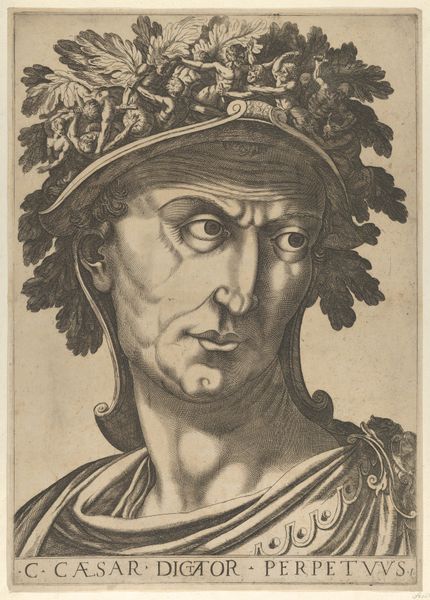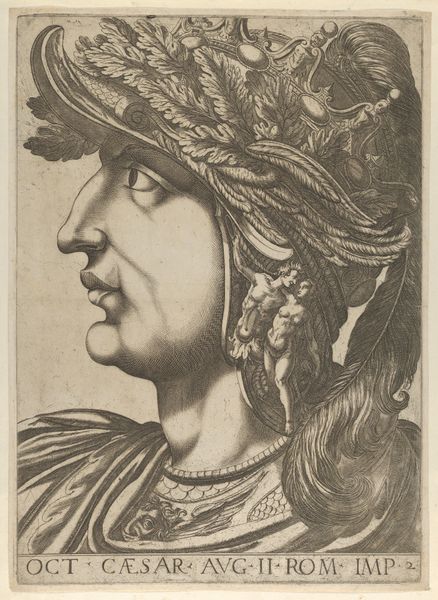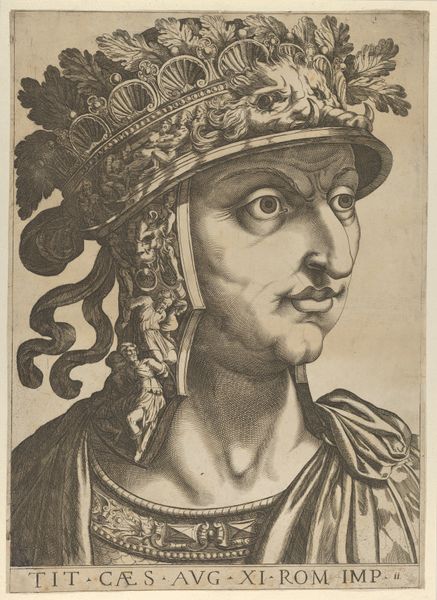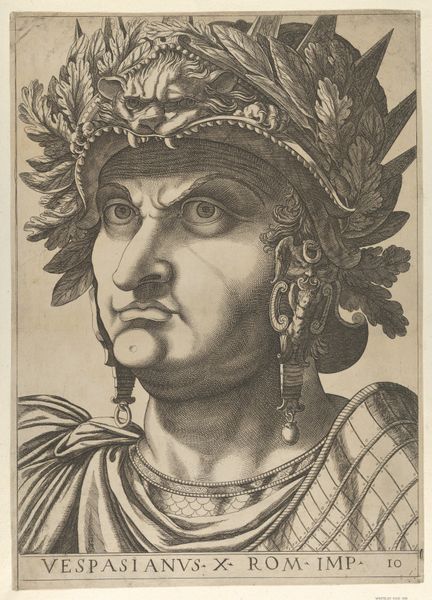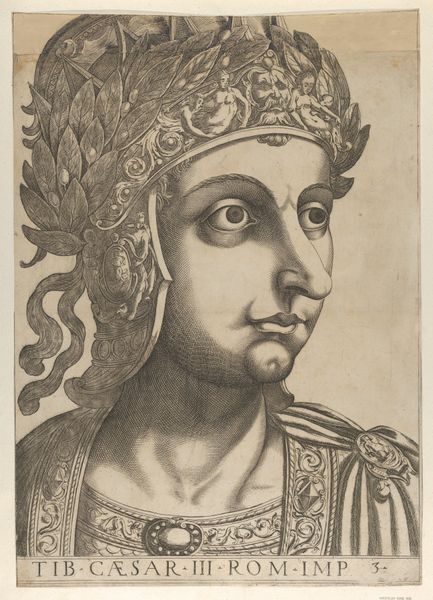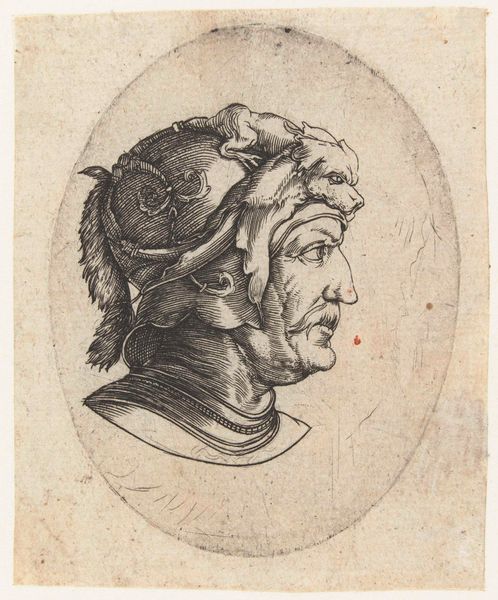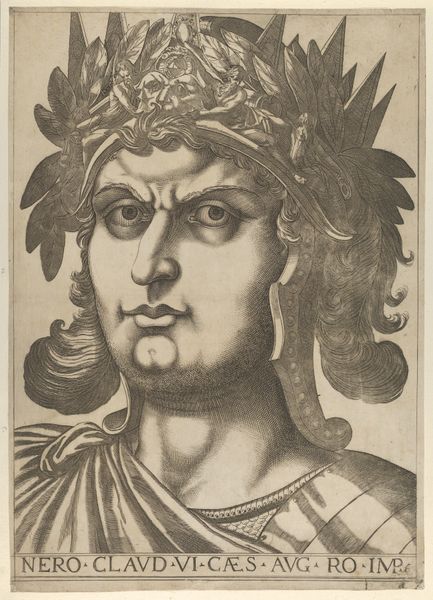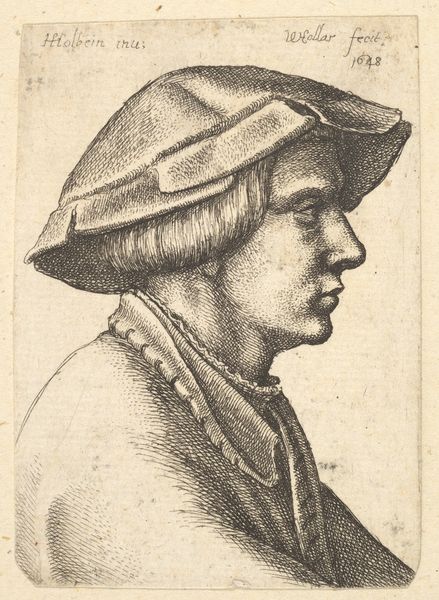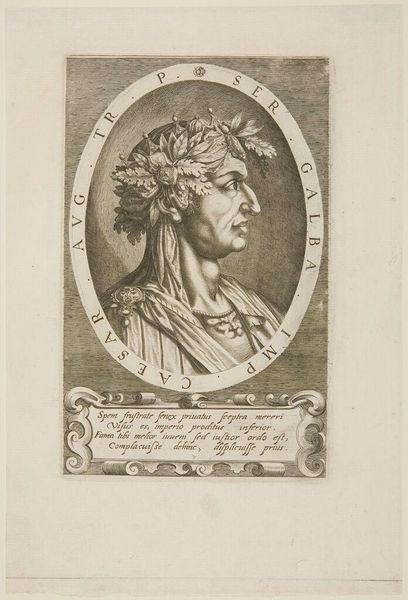
Plate 4: Caius in profile facing left, from "The Twelve Caesars" 1610 - 1640
0:00
0:00
drawing, print, engraving
#
portrait
#
drawing
# print
#
caricature
#
ancient-mediterranean
#
men
#
history-painting
#
engraving
#
profile
Dimensions: Sheet (Trimmed): 20 3/8 × 14 3/8 in. (51.7 × 36.5 cm)
Copyright: Public Domain
Editor: This is "Plate 4: Caius in profile facing left, from 'The Twelve Caesars,'" dating from 1610 to 1640. It's an engraving, currently at the Metropolitan Museum of Art. The detail is just incredible – especially in the helmet. What do you see in this portrait? Curator: The overwhelming imagery! It’s a striking example of how rulers used iconography to project power. Beyond the immediate likeness of Caligula, it’s crucial to consider the symbolic weight of his attire, that elaborate helmet especially. Editor: So the helmet isn’t just decoration? Curator: Oh, absolutely not! It is a battlefield of meaning, brimming with tiny figures. Look at them—they could represent conquered enemies, mythological narratives, or even allegories of his reign. Each addition transforms the ruler into a walking emblem, a symbol designed to be interpreted and remembered. What emotions do these symbols evoke for you? Editor: I guess, initially, just… excess. Maybe even instability? Like, there’s too much going on. It makes him seem almost… vulnerable, in a weird way. Curator: A perceptive observation. Does that feeling of unease shift when considering how later artists portray rulers without these elaborate, arguably absurd displays of power? Think of the implications surrounding simplicity and authenticity in visual rhetoric over time. Editor: That's interesting, I hadn't thought of that. It makes me wonder about the changing relationship between image and power throughout history. Curator: Exactly! It is exciting to consider how cultural memory and political symbolism intersect, influencing everything from art to our contemporary visual landscape. Editor: This has been such a great new perspective. Thanks so much!
Comments
No comments
Be the first to comment and join the conversation on the ultimate creative platform.
